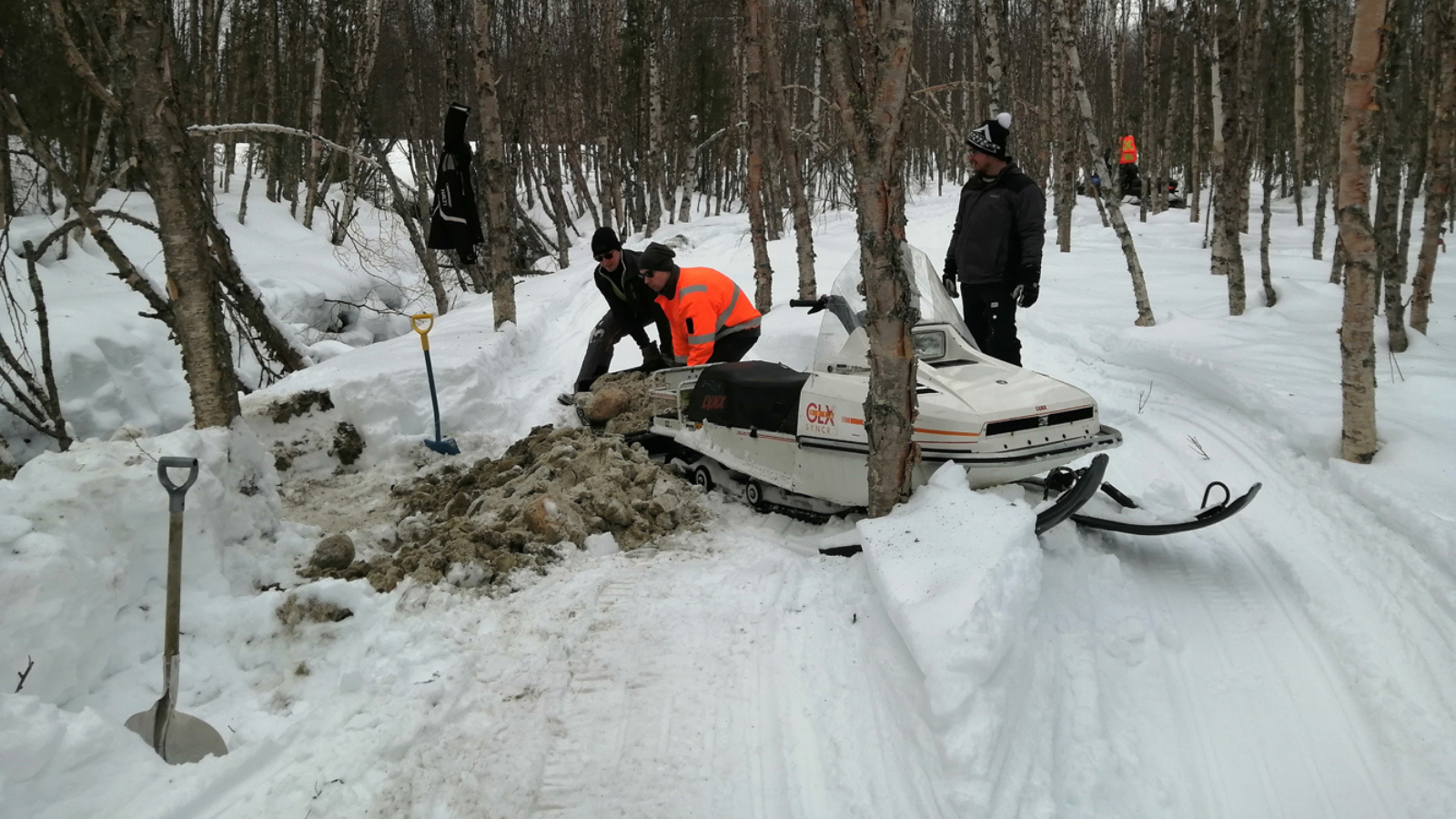March 29, 2021
The hardworking volunteers restoring the Parvajoki River gathered for a work session in the area on Saturday, March 20. Because of the COVID-19 situation, the number of participants was restricted to six people, with other safety measures in place while working.
About 6 m3 of rock material was transported to the riverside by sleds and snowmobiles to be used for building shelters for the fry. Some of the rocks were already dropped into the river, ready for next summer’s work sessions. The rock material used was coarser than usual, including boulders of up to 80 kg.
Successful trout spawning last fall
In September, the volunteers observed trout spawning and noticed signs of a fairly large female spawning at the gravel beds that the volunteers made last summer. The size of the redd was about 100 cm x 80 cm, which indicates a 1–2 kg fish. The volunteers managed to take photos of some smaller spawning fish, about 30–40 cm long.
Successful spawning is likely to result in small fry in the area. That is why it is important to build shelters where they can hide from predators and grow bigger. Rocky material provides both shelter and a feeding ground for the fry, as the rock surfaces collect many kinds of microfauna.
Protecting the spawning areas
During the session on Saturday, the volunteers brought rock material about 100 m downstream from the spawning area. They kept a safety distance of about 20 m from the spawning area because this time is critical for the survival of the fry. The smallest disturbance in the spawning gravel may destroy it and cause the fry to die. The gravel beds must not be disturbed before the eggs have hatched and the fry have left the spawning gravel.
More than one cubic meter of the rock material was thrown into the river in places that would not disturb the fry. The rest of the rocks will be placed in the riverbed after the water goes down in early summer. “Everything looks good at the river, and the work continues despite COVID-19. Our expectations regarding next summer and the new generation of fish are high,” said exploration geologist Pekka Kämäräinen, reporting about the work session.
Thank you to the hardworking and persevering volunteers—it is a pleasure to support these activities!



Leave A Comment